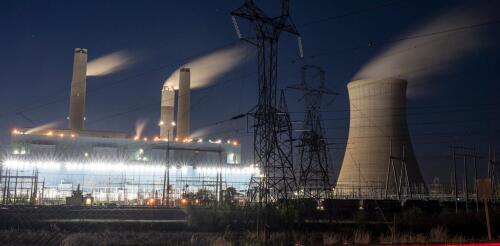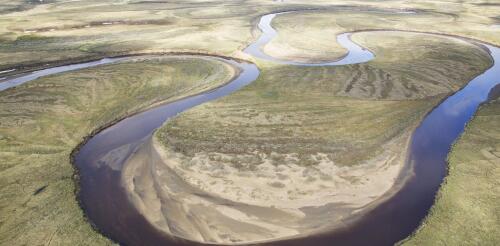Fossil fuels
The U.S. government is planning to crack down on power plants’ greenhouse gas emissions, and, as a result, a lot of money is about to pour into technology that can capture carbon dioxide from smokestacks and lock it away. That raises an important question: Once carbon dioxide is captured and stored, how do we ensure it stays put? Power plants that burn fossil fuels, such as coal and natural gas, release a lot of carbon dioxide. As that CO₂ accumulates in the atmosphere, it traps heat near the Earth’s surface, driving global warming. But if CO₂ emissions can be captured instead and locked away for thousands of years, existing fossil fuel power plants could meet the proposed new federal standards and reduce their impact on climate change. We work on carbon capture and storage technologies and policies as a scientist and an engineer. One of us, Klaus Lackner, proposed a tenet more than two decades ago that is echoed in the proposed standards: For all car...
Cold spells often bring climate change deniers out in force on social media, with hashtags like #ClimateHoax and #ClimateScam. Former President Donald Trump often chimes in, repeatedly claiming that each cold snap disproves the existence of global warming. From a scientific standpoint, these claims of disproof are absurd. Fluctuations in the weather don’t refute clear long-term trends in the climate. Yet many people believe these claims, and the political result has been reduced willingness to take action to mitigate climate change. Sen. James Inhofe brought a snowball to the Senate floor in February 2015 to argue that because it was cold enough to snow in Washington, D.C., climate change wasn’t real. That year became the hottest on record and has since been surpassed. Why are so many people susceptible to this type of disinformation? My field, psychology, can help explain – and help people avoid being misled. The allure...
On May 11, 2023, the Biden administration proposed new regulations to curb carbon pollution from existing power plants. The new rules replace the Obama administration’s Clean Power Plan, which was proposed in 2015 but ran into multiple legal challenges and never took effect. Nonetheless, in a high-profile 2022 ruling, West Virginia v. EPA, the U.S. Supreme Court found that the Obama administration’s approach exceeded the Environmental Protection Agency’s authority to regulate power plant carbon pollution under the Clean Air Act. Jennifer K. Rushlow, dean of the Vermont School for the Environment and a law professor at Vermont Law & Graduate School, explains how the new regulations are designed and the delicate balance they attempt to strike between slowing climate change and avoiding further legal setbacks. 1. How has the Biden administration tailored these regulations in response to the West Virginia v. EPA ruling? The scent of West Virginia v. EPA is al...
Hydrogen, or H₂, is getting a lot of attention lately as governments in the U.S., Canada and Europe push to cut their greenhouse gas emissions. But what exactly is H₂, and is it really a clean power source? I specialize in researching and developing H₂ production techniques. Here are some key facts about this versatile chemical that could play a much larger role in our lives in the future. So, what is hydrogen? Hydrogen is the most abundant element in the universe, but because it’s so reactive, it isn’t found on its own in nature. Instead, it is typically bound to other atoms and molecules in water, natural gas, coal and even biological matter like plants and human bodies. Hydrogen can be isolated, however. And on its own, the H₂ molecule packs a heavy punch as a highly effective energy carrier. It is already used in industry to manufacture ammonia, methanol and steel and in refining crude oil. As a fuel, it can store energy and reduce emi...
For more than six decades, Alaska’s North Slope has been a focus of intense controversy over oil development and wilderness protection, with no end in sight. Willow field, a 600-million-barrel, US$8 billion oil project recently approved by the Biden administration – to the outrage of environmental and climate activists – is the latest chapter in that long saga. To understand why President Joe Biden allowed the project, despite vowing “no more drilling on federal lands, period” during his campaign for president, some historical background is necessary, along with a closer look at the ways domestic and international fears are complicating any decision for or against future oil development on the North Slope. More than just Willow The Willow project lies within a vast, 23 million-acre area known as the National Petroleum Reserve-Alaska, or NPR-A. This was one of four such reserves set aside in the early 1900s to guarantee a supply of oil for the U.S....




